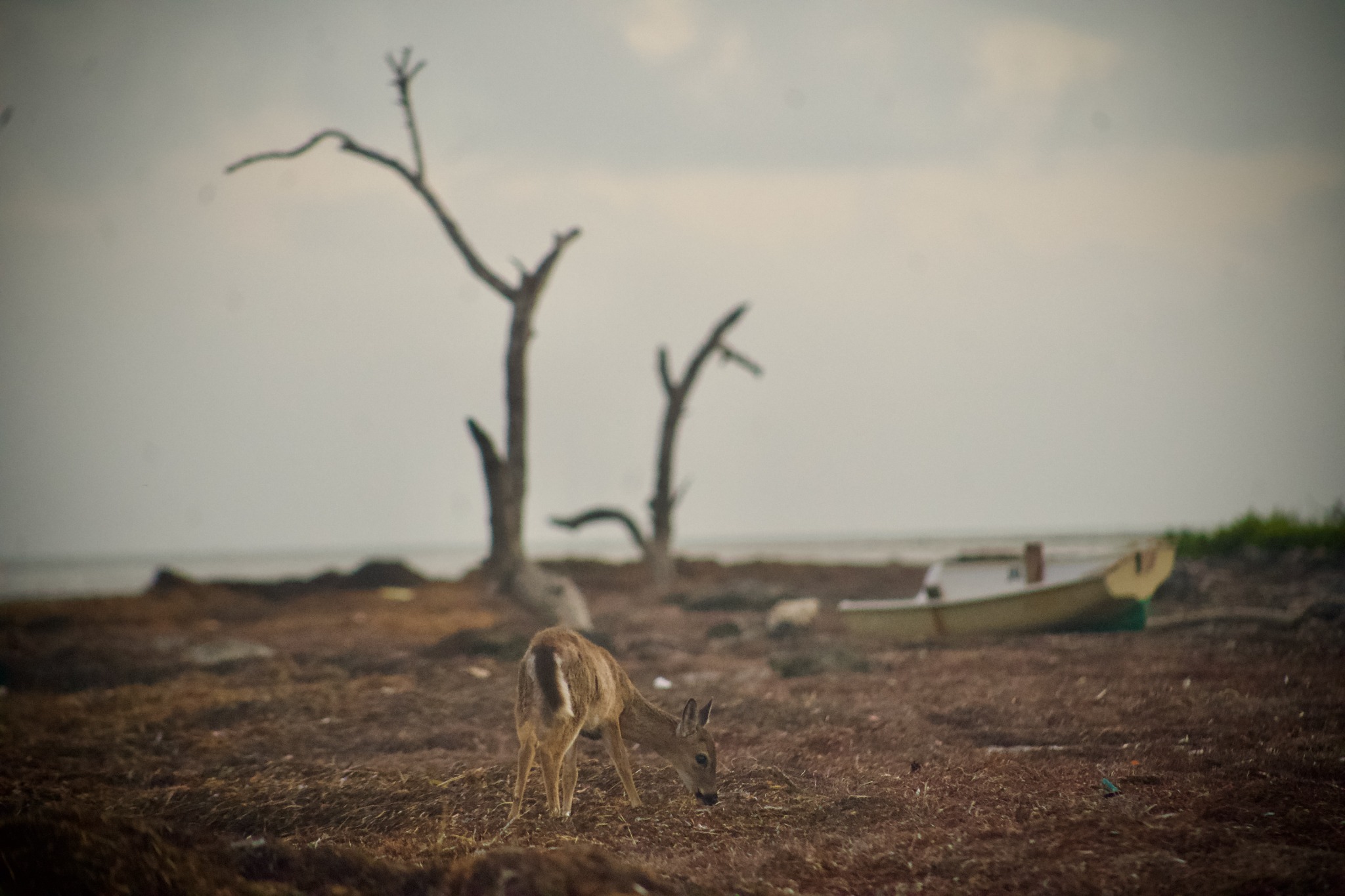
Close Encounters with America's Tiniest Deer
When you think Florida, you think gators and sharks, not Bambi.
But the Sunshine State is also the home of one of America's least threatening species: the Florida Key Deer.
Found only in the Lower Keys, this subspecies of the white-tailed deer look identical to their mainland cousins, only in miniature. Adults are about the size of a golden retriever.
Their ancestors wandered down here millennia ago and got stuck when sea levels rose and created the chain of islands we now know as the Florida Keys. The deer continued to evolve in isolation, in accordance with what evolutionary biologists call the "island rule," the tendency toward gigantism in some species, like the Komodo dragon, and dwarfism in others, such as the Key Deer.
If it weren't for the ominous signage everywhere, you'd never imagine the Key Deer are critically endangered, with an estimated population of just 700-800, according to the Florida Fish and Wildlife Commission. The tawny little beauties are everywhere in Big Pine Key: the campgrounds, the beach, the Winn Dixie, entreating you with their big brown baby eyes to give them food, pets,

or let them crash on your couch and watch Fox News, according to this article in the Miami Herald which only sounds like Dave Barry made it up.
The Key Deer may be too cute for their own good.
Feeding the deer not only make them dependent on humans for survival, but it encourages them to approach vehicles. Vehicle collisions account for the highest number of Key Deer deaths, 125-150 fatalities per year, despite traffic barriers, underpasses and strictly enforced speed limits.
In a state known to be pretty laissez faire where human safety is concerned, there are severe penalties in place for feeding or even touching Key Deer: $500 fines and up to 6 months of jail time. This didn't seem to worry the family at the campsite across from us, who let the deer eat of of their hands like goats at a petting zoo. They really need get those poor kids a dog.
Cuteness could also be the Key Deer's salvation. People care a lot more about saving a cute furry species like the Key Deer, than say, a slimy blobfish.
The local community has rallied around the Key Deer since the 50s, when they nearly went extinct due to poaching and habitat destruction. At one point the population dipped as low as about 24 individuals. This led to the establishment of the National Key Deer Refuge , one of the first wildlife sanctuaries of its kind in the US.

The 8500-acre refuge runs adjacent to the campground at Big Pine RV. Many evenings I'd walk along the beach just inside the refuge boundaries, a rather desolate stretch of sharp limestone and sun-dried seagrass, where Cormorants and White Ibis perched on the gnarled branches of dead trees. One night, I was picking my way along the tide pools, when I happened on a lone key deer, almost perfectly camouflaged against the gray rock and brown grass. She looked at me with her deep, inquisitive eyes went back to browsing. I trailed after her at respectful distance, sinking ankle-deep in the matted seagrass she stepped through so nimbly. I hoped her tribe was nearby, and that her mother hadn't been run over by a Winnebago.
It may be too late to slow the rising seas, but I like to think that the deer will just keep shrinking along with the islands, and that in a hundred years, herds of Lilliputian deer will roam the rocky shelves and sandbars above the submerged ruins of Big Pine Key RV Park.

Post a comment